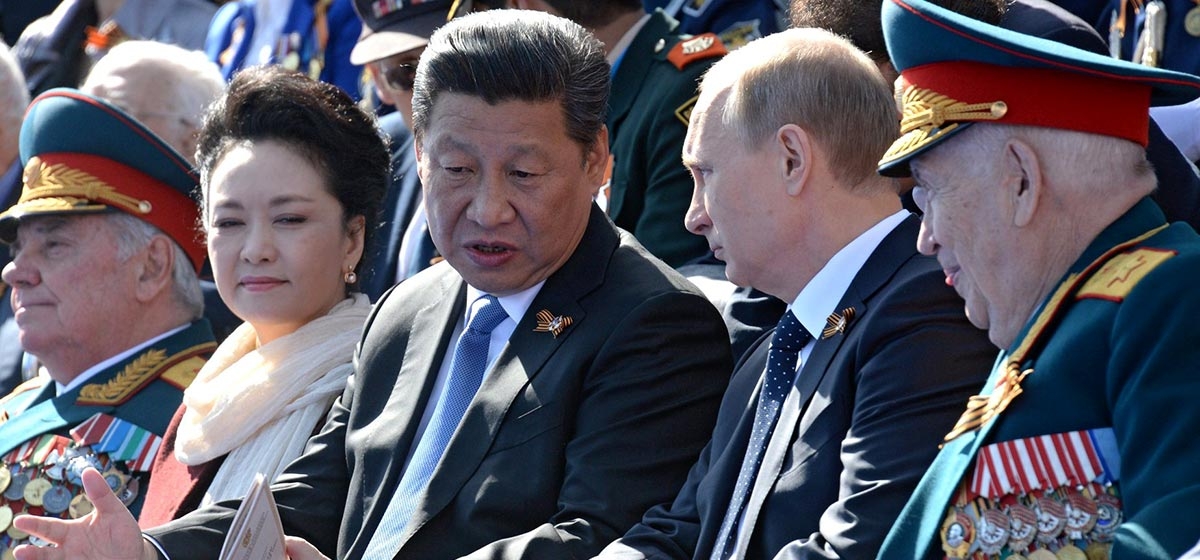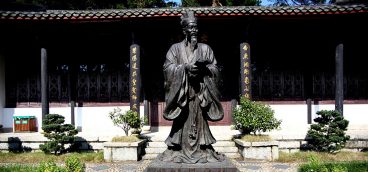The Trouble with China

Virtually every American policymaker believed that the collapse of the USSR marked “the end of history.” Ever since the dawn of human civilization, hostile societies had vied for supremacy, resulting in war after war.
But, it was thought, the break-up of the main sponsor of Communism demonstrated that there were simply no political ideas that could compete with free market democracy. Looking forward, all the world’s societies would evolve gradually toward capitalism and toward republican forms of government.
This attitude, known as “triumphalism” (i.e., the conviction that the Western system of government is obviously superior to and will inevitably triumph over all others) was best expressed in Francis Fukuyama’s famous article, “The End of History,” published in “The National Interest” (and in his subsequent book, “The End of History and the Last Man”).
Triumphalism, however, came as a surprise to radical Islam and to China’s “Socialism with Chinese Characteristics.” These two systems both considered that, far from being triumphant, capitalism and democracy were worn out, failing systems. The world’s democratic republics were in terminal decline, while China and the radical Islamic world were in insuppressible ascent.
Radical Islam has certainly caused the world its share of problems, but it hasn’t, at least to date, proven to be an existential threat. The Islamic societies—and the supposed caliphates—are simply too poor and/or too unstable to compete head-to-head with the democratic West.
Indeed, many Islamic nations are, in fact, relatively secular democracies: Turkey, Algeria, Morocco, Indonesia, Bangladesh, Kazakhstan. Even Iran is a republic, albeit an Islamic one that allows religious leaders to override the democratic process (albeit not easily).
China, however, is a very different animal. China’s population is almost five times that of America’s. And even though its per capita income is far below that of the Western democracies (@ $60,000 for the U.S. versus @ $10,000 for China), its aggregate GDP is huge, giving it far more clout than any country in the world except the U.S. China is, in fact, the only major economy in the world whose leaders are not elected.
In addition, and far more worrisome, China practices, and advocates, a totalitarian system that elevates the interests of the Chinese Communist Party above all else. Human freedoms, democratic elections, a free press, diversity, open economic markets, all this and more is sacrificed as necessary to keep the CCP in power.
Worse, China exports totalitarianism. China is the major financial and political supporter of abhorrent regimes in Venezuela, Cuba, North Korea, Nicaragua, and elsewhere. It sells monitoring technology to places like Yemen and Syria so that those regimes can also repress their populations.
Finally, China seizes territory belonging to other sovereign countries whenever it can get away with it. Viz., the South China Sea and the East China Sea. Nepal is essentially a ward of China and Tibet was long ago incorporated into China proper.
Which brings us to Xi Jinping. Whatever else we might say about China’s leader, you have to give the man his due: he sees China far more clearly than any Chinese leader since Deng Xiaoping.
Deng, as noted in the first post in this series, observed that Communist economic policies were destroying the USSR and would soon destroy China. So Deng changed those policies and pursued capitalist practices wherever possible. “Socialism,” Deng was fond of saying, “does not mean shared poverty.”
Deng’s bargain with the Chinese people was Faustian but straightforward: “Give us [i.e., the CCP] all power and we will make you rich.” For 25 years the CCP kept its end of the bargain, riding capitalist practices to incredible economic growth. “Socialism with Chinese Characteristics” may not have made logical sense, but it worked for a long time.
But by the time Xi came to power, Deng’s reforms and “openness” had begun to run out of steam. GDP growth was, even by official measures, only half what it had been. Most Western observers put Chinese GDP growth at about 2% lower than the official numbers, meaning growth may have slipped to only one-quarter of its peak.
To make matters worse, the most influential group in China – the urban middle class elite – are now wealthy enough that a bit more economic growth is less important to them than personal freedoms.
As Xi saw clearly, that left the CCP only two choices. The first, and the choice everyone in the West assumed the CCP would make, was to double down on Deng’s reforms and openness. Political and economic liberalization would boost economic growth and also vastly enrich the Chinese polity in nonfinancial ways.
But Xi recognized that that road led to perdition, at least if you were the head of the CCP. Even Deng’s limited reforms had caused many problems, starting with Tiananmen Square. Further liberalization could very quickly spiral out of control, as had happened near the end of the Soviet Union.
“Xi sees no place for political experimentation or liberal values in China, and regards democratization, civil society, and universal human rights as anathema.” –Steve Tsang, Director of the China Institute, SOAS University, London
In other words, when Xi closes his eyes at night his nightmare isn’t about corruption or the trade dispute with the U.S. His recurring nightmare is the collapse of the CCP and the consequences for Mr. Xi.
When dictatorships fail, the dictators are sometimes allowed to retire quietly to the countryside. Sometimes they are allowed to slip out of the country to asylum in some other dictatorship.
All too often, however – as in Xi’s recurring nightmare – the tyrants are hunted down like animals and killed. Consider, just in the modern era (never mind Charles I or Louis XIV), Mussolini, the Ceausescus, Antonescu (Romania), Samuel Doe (Liberia), Najibullah (the Communist dictator of Afghanistan), Saddam, Gadhafi, etc., etc.
If you were Xi, would you take a flyer on political and economic liberalization? Me neither.
Next week we’ll take a look at why now is almost the ideal time to launch Cold War II. (The ideal time was ten years ago.)
Next up: Cold War II, Part 4





